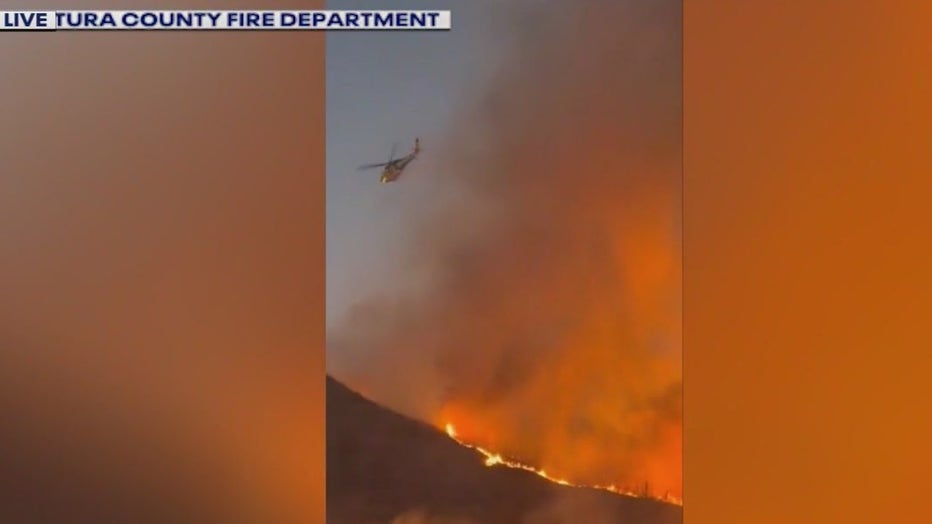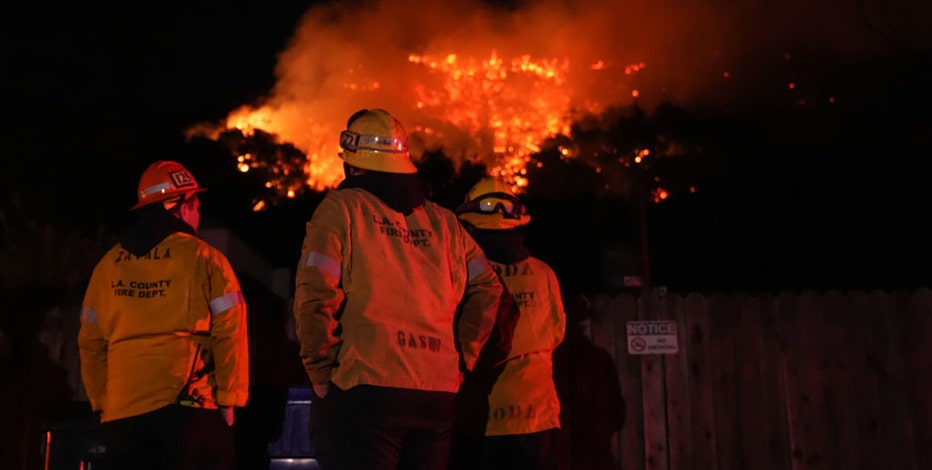Challenges prevent Arizona from nighttime aerial firefighting seen in California

Is nighttime aerial firefighting coming to AZ?
As California crews conduct nighttime aerial firefighting, experts discuss the challenges for adopting similar practices in Arizona. FOX 10's Nicole Krasean has more.
PHOENIX - We know fires are fought on the ground and from the air.
Firefighters carrying out drops in the middle of the night in California are something many of us are seeing for the first time, especially in Arizona.
We learned there are several factors that play into why Arizona fire crews suspend aerial drops at night.
But as wildfires become more prevalent year-round in the interior of western North America, one expert says there is a conversation to be had about deploying certain planes when the sun goes down.
Among the crews responding to the fires in Los Angeles this week is 10 Tanker Air Carrier, a company that responds to fires across the globe using some of the biggest air tankers available.

President and CEO Joel Kerley says California firefighting presents a unique challenge due to the vegetation there and the Santa Ana winds.
"We get heavy winds down south but the Santa Anas are really something. It's really low relative humidity. The velocity, 100+ mile per hour winds makes firefighting extremely difficult," said Kerley.
California fire crews are active at night, something we don't see here in Arizona.
Featured
Mesa man seeks support after family home is destroyed in California wildfires
The family of Andre Cathern lost everything in the California wildfires and Arizonans are stepping up to help provide support.
Kerley says one reason aerial drops are suspended at night here is due to less of a necessity for them.
"Normally here out west in the interior things will get cold and we'll get some reprieve from the relative humidity so it tends to shut down at night or diminish quite a bit," Kerley said.
Another reason is budgeting and the need for specialized manpower.
"Fighting fire at night is an expensive proposition," he said. "You have to have different equipment, you know, night vision goggles, you have to have double the crew because you're fighting fire during the day and you're fighting fire at night."
And then there's the safety risk involved for aerial crews.
"If the fire gains 1,000 acres overnight, is it worth placing crews out there flying fast, flying low, dropping at night? It's a different game," Kerley said.
Watch FOX 10 Phoenix live:
One tool Kerley says could and should be utilized in Arizona is 24/7 surveillance of fires, which is done at a higher altitude.
It can help get crews the best information when their efforts begin at daybreak.
"Why wouldn't we have assets up overnight at least giving us information, giving you information that you can talk to the public about, and that is up to date and by the minute," Kerley said.
Featured
LA fires latest: What to know about deadly wildfires as winds die down
Firefighters battle several deadly wildfires in Los Angeles County as winds finally begin to die down. Here's what to know on Friday.
He made another point: There really is no offseason for wildfires anymore.
It's something we're seeing in the high country right now.
He said this can lead to limited response ability as some planes have to go into maintenance at this time of year.
As for the around-the-clock surveillance during fires, that is something Kerley will continue to advocate for.



